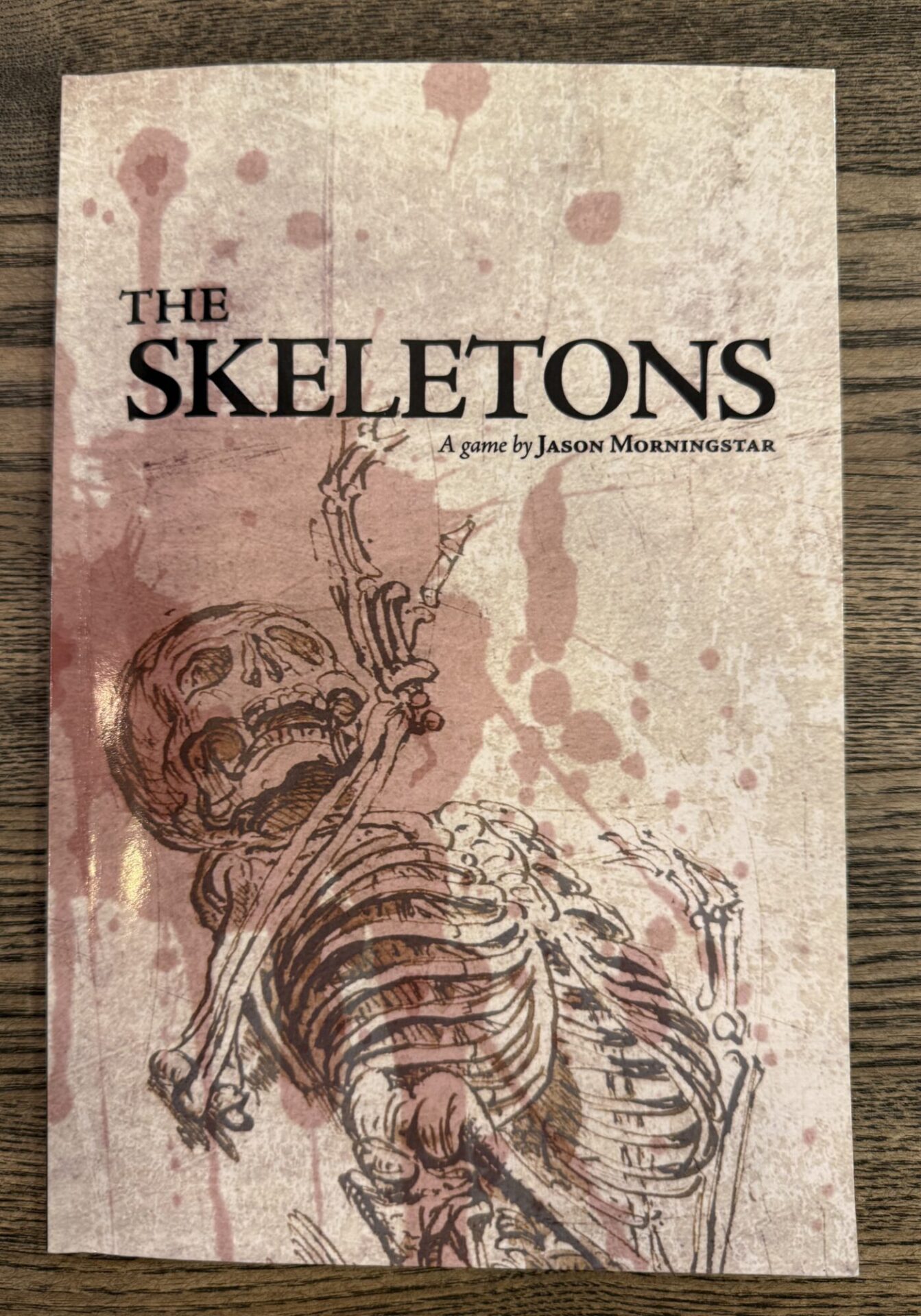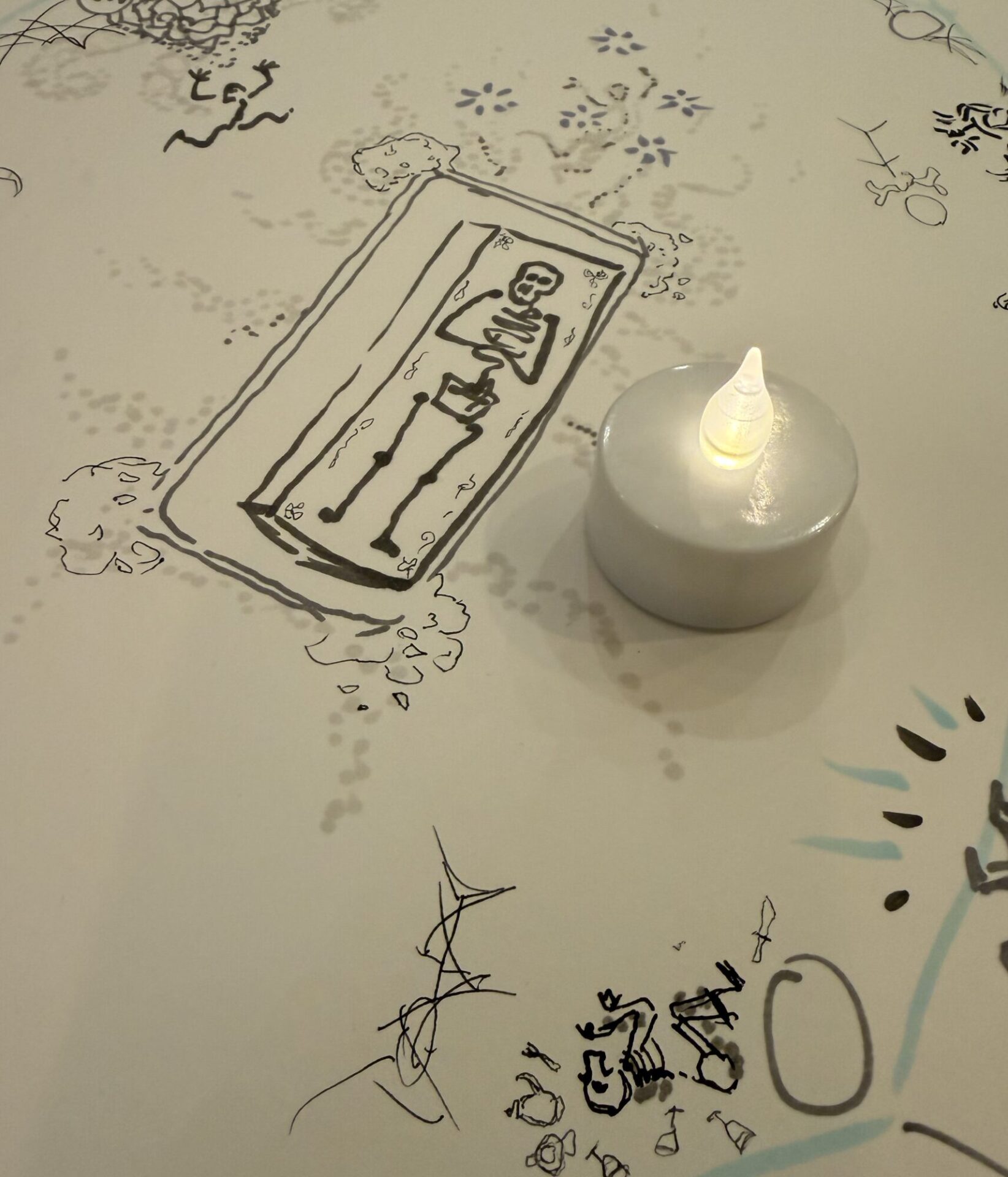The Skeletons is a roleplaying game by Jason Morningstar (Night Witches, Fiasco). It’s meant for freeform meditative play for 1-6 players. We played with four players (skeletons), with a facilitator (myself).
In The Skeletons the players are skeletal guardians of a tomb. Sometimes the tomb is threatened by an invader, and the skeletons spring to life to stop them. Then they return to rest. When resting, the players sit still or lie down in a dark room, in complete silence, until another invader threatens the tomb.

I set up my bedroom as “a tomb”. I removed all objects from the space and covered all furniture in dark fabric. I sat a life size (plastic) skeleton in the center for good effect, and lit the room with two LED candles. Most of my players had never been to my bedroom, so it felt special compared to a normal roleplaying game session – I escorted them upstairs to the “tomb”, and let them meet the skeleton in the dim, flickering light, on their own. I asked them to lie down where they like, and sat next to the door, myself – in reach of the light switch.
This worked really well. There were two logistical challenges – one, I didn’t realize how much light actually gets through the blinds (I had tested the setup, but didn’t account for eyes adjusting to darkness) , and two, my dog only shut up just before the finale, otherwise barking outside the door whenever we were quiet.

The core game worked really well. We used the rotating spotlight variant, where I had one player play the invaders.
Memories, which you unlock by doing your duty as a skeletal guardian, killing the invaders, felt under-utilized. If we are to play the basic game again, we’ll want to give them more space.
Speaking of more space, we all felt that the rest periods were far too short. Perhaps this is on purpose, but we plan to at least double the lengths for the next game.
Despite the heavy-handed structure of the game and the very bare bones (I’m sorry) characterization, we hit real emotion in multiple scenes. I wasn’t really expecting that.

At the end of the game, three things happened.
One, I felt at rest, calm, and refreshed. These are not things I usually feel at the end of a roleplaying game: I tend to be excited and spent. (Uhh, not entirely unlike sex, thinking about it? If not as sweaty.)
Two, we launched into an hour long discussion on, yes, the game, after our usual stars & wishes round, but also life, mortality, the meaninglessness of everything, passage of time, history, and what we leave behind.
The game discussions were interesting. Everyone saw the value of a bespoke ritual space, and how you being physically in this space alters the experience. There was discussion of playing Ten Candles. (As it happens, I’m designing a ritual and physicality heavy game with one of the players.)
Three, the players and myself came up with a whole series of variants of this game we’d like to play. This wasn’t just talk, either: we had two variants being designed the same night! It’s also rare for players of a random one-shot they’ve never played before to enthusiastically state that they want to play again without me asking about their interest to try again. We’ll need to get on that before spring makes playing in the dark difficult again.
I’ll mention the variant I’m now working on: a fantasy and violence free version of The Skeletons, where the players are humans buried in the same cemetery, seeing who comes by to remember them. I realize how likely this is going to bring up real grief, considering we got plenty of that even in this distanced fantasy version.
Leave a Reply